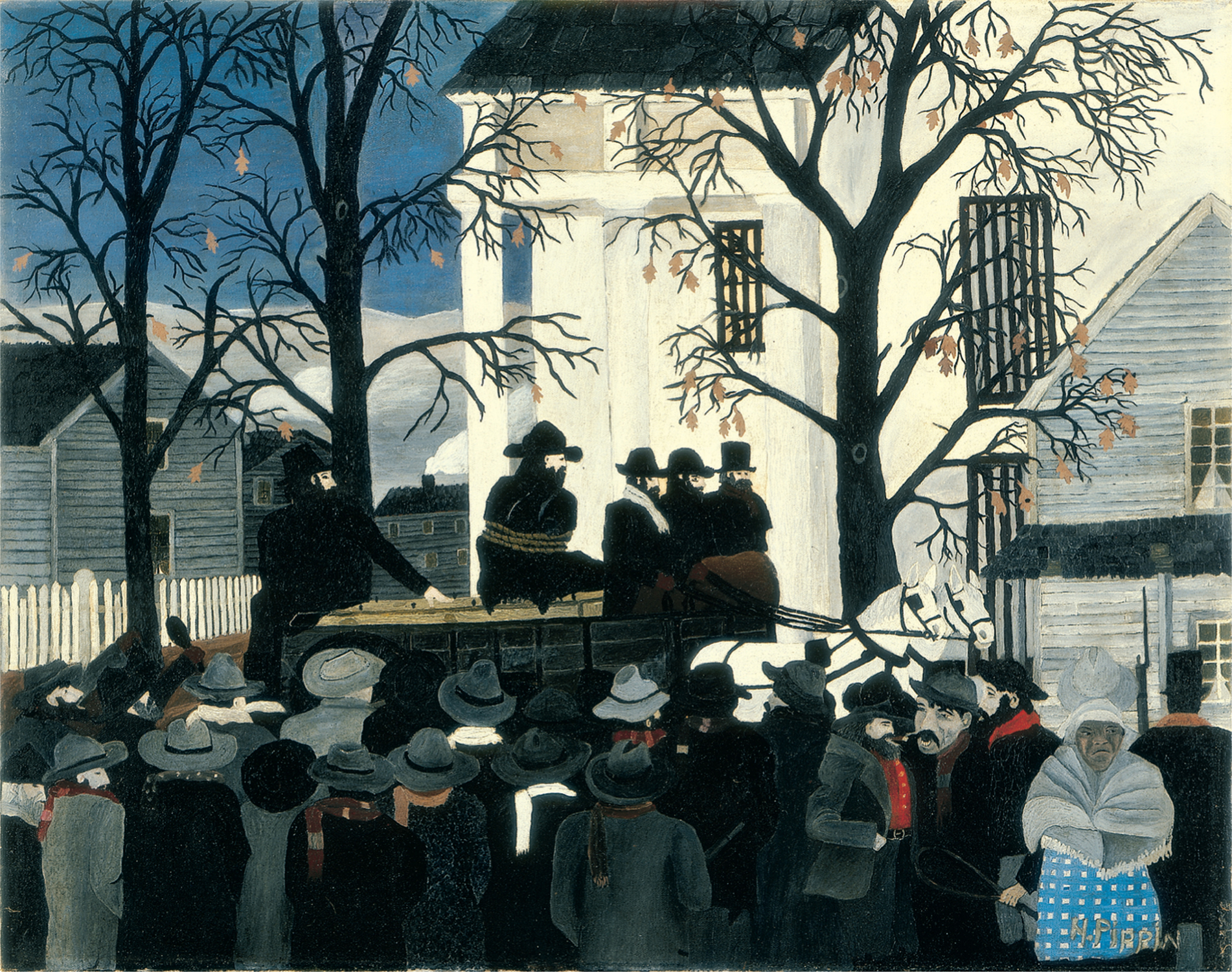The American Promise:
Printed Page 393
The American Promise Value
Edition: Printed Page 375
Chapter Chronology
The Aftermath of John Brown’s Raid
For his attack on Harpers Ferry, John Brown stood trial for treason, murder, and incitement of slave insurrection. “To hang a fanatic is to make a martyr of him and fledge another brood of the same sort,” cautioned one newspaper, but on December 2, 1859, Virginia executed Brown. In life, he was a ne’er-do-well, but, as the poet Stephen Vincent Benét observed, “he knew how to die.” Brown told his wife that he was “determined to make the utmost possible out of a defeat.” He told the court: “If it is deemed necessary that I should forfeit my life for the furtherance of the ends of justice, and mingle my blood further with the blood of . . . millions in this slave country whose rights are disregarded by wicked, cruel, and unjust enactments, I say, let it be done.”

VISUAL ACTIVITY John Brown Going to His Hanging, by Horace Pippin, 1942 The grandparents of Horace Pippin, a Pennsylvania artist, were slaves. His grandmother witnessed the hanging of John Brown, and this painting recalls the scene she so often described to him. Pippin used a muted palette to establish the bleak setting, but he also managed to convey its striking intensity. Historically accurate, the painting depicts Brown tied and sitting erect on his coffin, passing resolutely before the silent, staring white men. The black woman in the lower right corner presumably is Pippin’s grandmother. Romare Bearden, another African American artist, recalled the central place of John Brown in black memory: “Lincoln and John Brown were as much a part of the actuality of the Afro-American experience, as were the domino games and the hoe cakes for Sunday morning breakfast. I vividly recall the yearly commemorations for John Brown.” Courtesy of the Pennsylvania Academy of Fine Arts, Philadelphia. www.pafa.org. John Lambert Fund. READING THE IMAGE: What was the artist trying to convey about the tone of John Brown’s execution? According to the painting, what were the feelings of those gathered to witness the event? CONNECTIONS: How did Brown’s trial and execution contribute to the growing split between North and South?
After Brown’s execution, Americans across the land contemplated the meaning of his life and death. Some Northerners celebrated his “splendid martyrdom.” Ralph Waldo Emerson likened Brown to Christ when he declared that Brown made “the gallows as glorious as the cross.” Most Northerners did not advocate bloody rebellion, however. Like Lincoln, they concluded that Brown’s noble antislavery ideals could not “excuse violence, bloodshed, and treason.”
Still, when northern churches marked John Brown’s hanging with tolling bells, hymns, and prayer vigils, white Southerners contemplated what they had in common with people who “regard John Brown as a martyr and a Christian hero, rather than a murderer and robber.” Georgia senator Robert Toombs announced solemnly that Southerners must “never permit this Federal government to pass into the traitorous hands of the black Republican party.”
